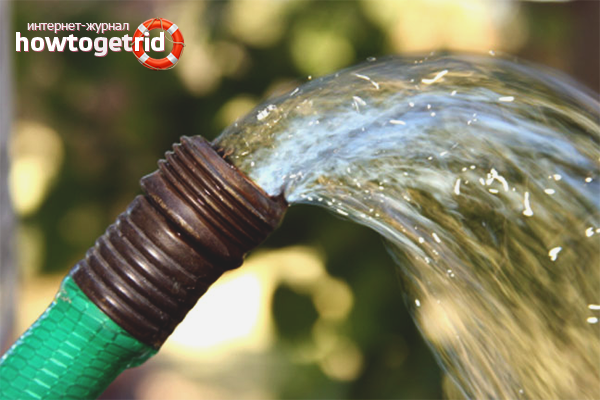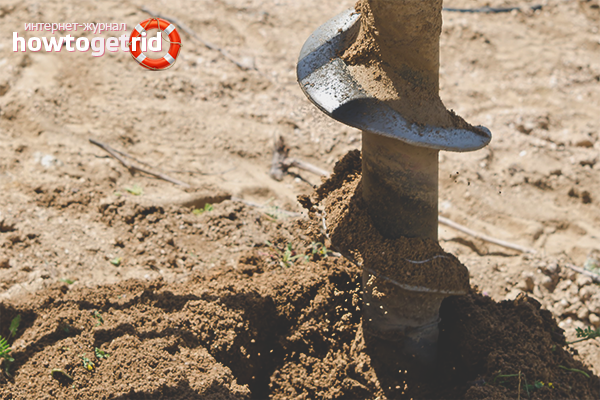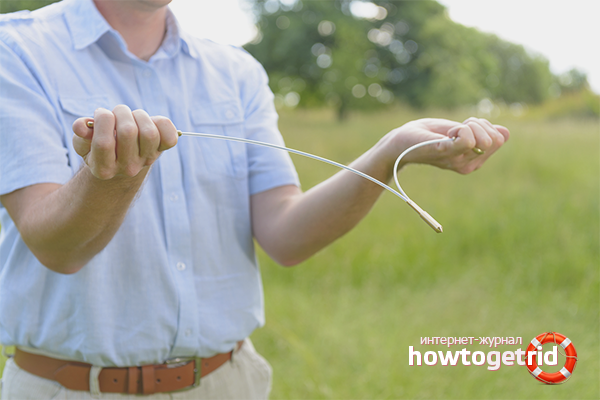The content of the article
Out-of-town accommodation in your own home is becoming increasingly popular. Indeed, instead of breathing smog in cities, why not move to the bosom of nature and give the body, and soul, a rest? But even in a private house, convenience is above all. In the first place, of course, is normal water supply. One of the best solutions is to own a well. But we’ll tell you how to find the perfect place for her.
Well: pros and cons
A well is a great alternative to a central water supply. It is indispensable where utilities are not carried out, and is very convenient where all issues have already been resolved with water. Many people refuse central pipes, preferring to create individual ones. And it’s clear why.
- A well takes water at a considerable depth (about 20-50 meters), so a clean and tasty liquid will flow from the tap;
- When downhole water supply is not used industrial treatment plants, it is not chlorinated, but only filtered;
- You get your own, independent, source that will function continuously and just as much as you need;
- The well is a fully adjustable structure. You can increase or decrease the pressure, install additional filters. In general, here you are a full owner;
- Finally, what flows from the well is environmentally friendly. You want, drink right from the tap. Having tasted at least once clean water from the bowels of our planet, you will once and for all refuse industrial, because well water is much tastier and softer. In addition, it often contains minerals, making the fluid alive.
Agree, there are a lot of pluses. That is why most people, especially families with children, opt for such a water supply. But! Of course, there are also disadvantages. And in order not to be subjective, let's look at them.
- Well water is underground resources. If you do not put the right pump and filter, you can get a liquid with an admixture of dirt, small particles and various suspensions.
- Taste. Unfortunately, it is not always pleasant near well water. Sometimes, because of the minerals contained, you can feel a metallic taste, and if the water stagnates, you will smell the swamp. The well must be used constantly and regularly pumped!
- Depth. Optimum - about 40 meters. Sometimes they dig a little deeper, sometimes vice versa, but approximately within such limits. The principle, the deeper, the better it does not work here, unless, of course, you have a goal to get to mineral water. But remember that the mineral water, which can be found about 100 meters or more, is not suitable for constant use.
- A well is an expensive pleasure, despite the fact that it does not require special care. To install it on the site, you will need a significant amount of money. But this is a long-term construction, constantly providing clean water.
When deciding, carefully weigh all the pros and cons. Today, a well is one of the best alternatives to all other types of providing a private house with water (including central water supply and traditional wells).
The main question: where to drill
The construction is being done by drilling the earth to a depth of several tens of meters. The result is a fairly narrow mine, which is constantly filled with water. Closer to the middle, a special pump is installed, pumping the liquid and letting it through the pipes. Also, each well has treatment filters, there are several of them. With a competent approach, you will get an environmentally friendly product.
The most important task is to find the right place in which to drill a well. It is important that it is constantly filled with water, and there are no interruptions. How to do it?
There are several ways. They can be reduced to only two groups: modern scientific and traditional folk. Each is effective in its own way. But if you conduct a combined study, using several at once, you are guaranteed to find the perfect place for your own source of life-giving moisture.
If you want the most delicious liquid - you need to find the third aquifer, which runs just about 40-50 meters. Let's look at how groundwater is formed.
So, rainfall comes from above. It can be hail, rain, snow - anything. The liquid, getting on the soil, is partially absorbed by plants, partially evaporates, but most of it seeps in. Passing through the soil, it is not only cleaned, but also saturated with mineral compounds. The very first layer of groundwater passes approximately 10-20 meters from the surface. It is not yet completely clean and not particularly enriched. Not suitable for food.
The second layer accumulates at a depth of about 25-30 meters. This is already a much cleaner water that has gone through several levels of natural filtration, quite pleasant. But the third layer is considered the best, formed about a dozen and a half meters below. Such a liquid has an optimal degree of purification, moderately mineralized, very tasty and soft. Waters running even lower are already mineral waters. They have a salty taste and are suitable as food additives, but not for constant use.
Folk wisdom, or follow nature
The dowsing method has long been invented, and it is quite effective. Take in each hand a rod of freshly cut willow and walk around the site. Where the vines stretch to each other, wanting to cross themselves, there is an aquifer. But there are other ways.
- Observation of plants. The moment when nature itself tells where to drill. If you see lush sprouts, horsetail, any other moisture-loving plants - it means that the water passes very close to the surface. In such places, usually there are many deeper underground sources. Pay attention to birch trees. In those places where the soil is saturated with moisture, a nodular trunk forms in the trees, branches like panicles (long lashes hanging down). An excellent indicator of the deep layers is pine. She does not like a wet surface, but she goes deep down in search of good water. Where pine is good, there is always deep groundwater.
- Natural phenomena. Where there is a lot of moisture, fog forms - the most important rule. On a cool evening after a hot day, carefully inspect the site. If you find a swirling fog, then there is water below. If he, as they say, “is a rocker”, then there is a lot of moisture. The terrain is also important. Ground ponds are usually located where we observe natural meadows, hollows. But on the heights, as a rule, there is no water or it runs very deep.
- Clay dishes. A very ancient and at the same time true way. Everything is simple here: in the place where the well is supposed to be laid, an ordinary clay pot is installed upside down. This is done at night. In the morning the dishes are checked: if fogging has formed on the walls and condensation droplets have appeared, it means that there is definitely water here.
These methods were born from our savvy people, tested over the centuries, and already even confirmed by science. But if you need even more clear knowledge, then you can take advantage of modern achievements.
Relying on Science and Technology
The barometer will help if there is any body of water nearby. The method will tell you how deep the aquifer passes. Measure the pressure in your area, and then go down to the pond and measure there.Then use the simple rule: every 13 meters of the difference is 1 division on the mercury column. In other words, if the difference between the pressure at the site and the pressure near the reservoir was approximately half a millimeter of mercury, then at the site of the proposed well the water flows at a depth of 6.5 meters.
But the surest way is exploration drilling. Using a special tool - a probe in the proposed well, the presence of water and its depth are determined. Finally, you can resort to the help of silica gel. This is a special friable material that actively absorbs moisture. Before use, it is dried, then wrapped in a cloth and instilled to a depth of about one and a half meters in the place of the proposed well (before that, silica gel must be weighed). After a day, dig and weigh again. The heavier the substance, the more water in the soil.
A well is a very useful structure. With the right approach, it will constantly provide clean water. That is why it is important to correctly determine where to drill it.
Video: exploratory water well drilling












Submit